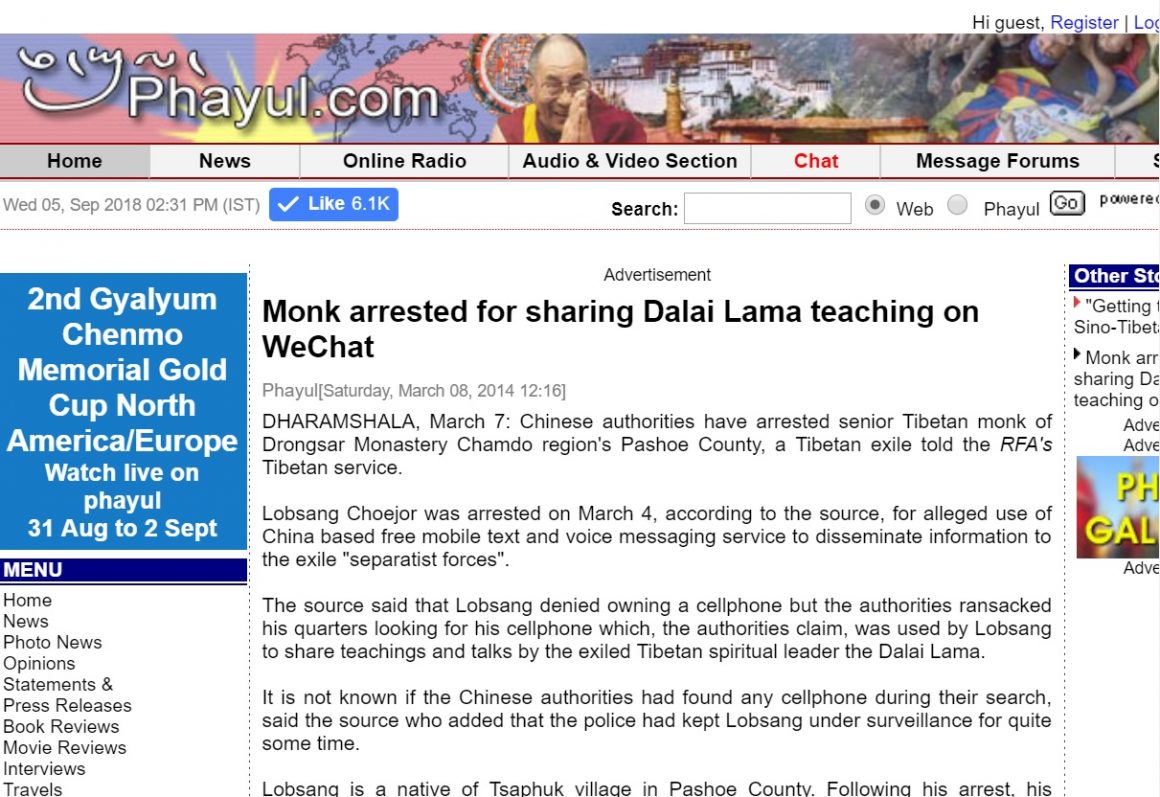Monk arrested for sharing Dalai Lama teaching on WeChat
DHARAMSHALA, March 7: Chinese authorities have arrested senior Tibetan monk of Drongsar Monastery Chamdo region’s Pashoe County, a Tibetan exile told the RFA’s Tibetan service.
Lobsang Choejor was arrested on March 4, according to the source, for alleged use of China based free mobile text and voice messaging service to disseminate information to the exile “separatist forces”.
The source said that Lobsang denied owning a cellphone but the authorities ransacked his quarters looking for his cellphone which, the authorities claim, was used by Lobsang to share teachings and talks by the exiled Tibetan spiritual leader the Dalai Lama.
It is not known if the Chinese authorities had found any cellphone during their search, said the source who added that the police had kept Lobsang under surveillance for quite some time.
Lobsang is a native of Tsaphuk village in Pashoe County. Following his arrest, his monastery, Drongsar, has also come under the heavy surveillance.
On October 11, 2013, a Tibetan woman Kalsang from Tsala Township in Driru was arrested for allegedly expressing “anti China” sentiments in social networking app WeChat and kept “banned pictures of the exiled Tibetan leader the Dalai Lama” in her cellular phone.
The New York based Tibet Action Institute, which works towards cyber security for Tibetans, says that there is a misconception among Tibetans that WeChat can not be monitored because of high volume of users. “This incident underlines the basic principle of surveillance and how a particular account can be monitored regardless of the number of WeChat users, said Lobsang Gyatso Sither, Trainer with the group. “Once an account is targeted, it is easily monitored. As such, one should always be aware of the risks of surveillance while using Wechat.”
WeChat is a text and voice messaging communication service developed by Tencent in 2011 and is widely used by Tibetans inside and outside Tibet. It has become the most used mode of communication through its walkie-talkie style messaging facility. However, activists and experts fear that the app’s voice-messaging service enables security officials to monitor user’s movements in real time and access other information shared via the app.



